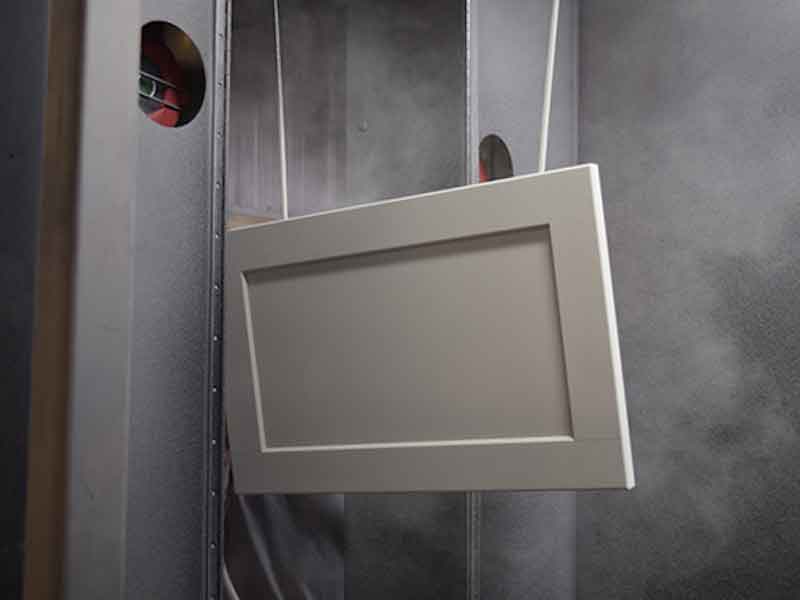Perhaps you’ve read about the revolution that is taking over the wood finishes market?
Efficient, technically excellent, with gorgeous aesthetics and an enviable environmental footprint – advancements in powder coatings mean that wood finishers now have powder technology available to them.
One area that powder is delivering savings and performance excellence already, is the primer market. IFS PureClad powder primers deliver a smooth, protective finish providing all the benefits of a liquid coating – and then some – in a single coat. Priming the wood or MDF with powder, and then adding either a powder or liquid topcoat is quick and easy (and yes, either powder or liquid can be applied as a topcoat).
Adding a liquid topcoat? You’ll benefit from great hold out as liquid topcoats will hold their sheen and won’t lose gloss due to the porosity of the primer.
So what are the advantages that a powder primer can deliver? Lets’ start with the basics – the coating has to stick, and PureClad powder primers display excellent adhesion to hardwoods, softwoods, particle board, MDF, HDF & veneer surfaces. Bearing in mind the current industry shortages, this also allows the fabricator more freedom to choose between MDF and HDF.
Once on, the single coat primer, applied at 3 – 4 mils, has excellent hide and delivers a smooth finish with excellent sandability. The high solids and excellent firm build go along way to minimize the “burn through” on profiles and edges. Customized sandability solutions are also available.
The powder primer has great flexibility, far surpassing traditional multi-coat liquid primers that have a tendency to ‘edge dive’ and can become brittle at 4 – 5 mils. Instead, PureClad primers will deliver the same mil thickness in a single coat without brittleness. In addition, the thermosetting powders create a solid, difficult to break barrier which offers superior moisture resistance, as well as excellent chemical and stain resistance – all so important in kitchens and bathrooms.
Once the powder is applied, it has to cure. Does this add a lot of time and energy to the process? Absolutely not. Six minutes in a natural gas infrared oven and the priming process is complete. The part simply cools down and is ready for topcoat, assembly or packing. Simple.
The powder primed parts can be primed, stored then sanded or shipped for coating later. Fast stacking is key for operations producing multiple parts every day. Traditional liquid primers require around 2-3 hours to stack if they are air dried, and at least 1 hour if they’re heated. A powder primed part is ready for stacking as soon as it cools down, only 5 – 10 minutes. What’s more, fabricator/coaters can go straight from the CNC machine direct to the powder coating process without time consuming edge sanding.
Let’s talk about the formulation itself. As well as no solvents – and therefore no Volatile Organic Compounds (VOCs) - powder also contains zero Formaldehyde. It’s pretty easy to agree that this has to be a good thing – especially as no performance is lost and additional technical capabilities are gained.
What’s more, powder primers will deliver excellent technical performance to the coated cabinet ensuring all KCMA tests are passed with flying colors.
Powder primers are transforming the finishing industry – learn more about how they can transform your business.
Visit https://www.ifscoatings.com/content/news/blog/optimal-prime-how-powder-is-transforming-primers-on-woodmdf/































